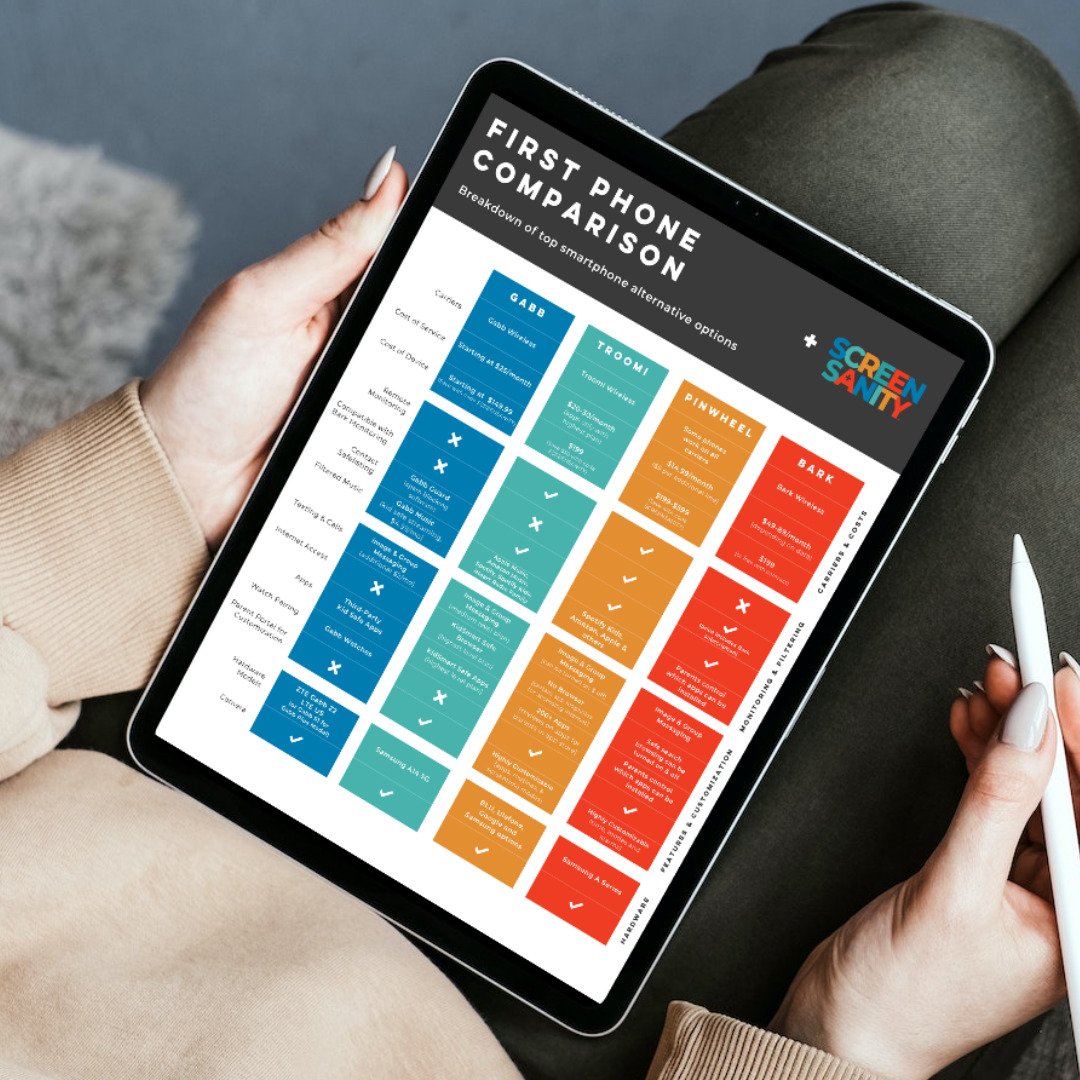
It’s that time of year when the weather shifts, holiday decor appears on shelves and gift-giving is on the mind. Along with connection, cheer and cups of cocoa, this season can also bring about lengthy shopping lists and overwhelming decisions. If one of those choices is whether or not to buy your child a smartphone, you are not alone!
But before you buy, we want to encourage you to check out the growing market of alternative products, especially if you are questioning whether your child is ready for the responsibility and mental burden that a smartphone can bring. When buying a device, first consider what level of functionality your kid actually needs — then buy a device that meets the need but avoids exposure to more mature experiences.
We know how time-consuming and tiresome it can be to research the growing market of alternative products out there and make a decision. To ease some of that stress, we’ve compiled information on smartphone alternatives we know and love. Also see our handy First Phone Comparison chart here.
GABB WIRELESS PHONE
When you’re getting your child a first phone, it can feel like every single decision you have to make is exhausting. Do I allow music? What apps are okay to download? Where does the device charge at night? If the step to a phone feels big enough, the Gabb is a great option to simplify and take phone introduction slowly.
There is also a Gabb Phone+ offering the same features above with the addition of access to image and group texting, Gabb kid-safe music streaming, and third-party kid-safe apps. This device costs $199.99 and uses Samsung hardware.
TROOMI PHONE
For families wanting a device that can “grow” with your child, the Troomi could be a good option for you. The brand has a user-friendly parent portal resource that allows for device customization. The same device can be set to offer varying levels of access to the internet and apps — permitting you to increase access as your child proves successful with different responsibilities.
PINWHEEL PHONE
If your family is looking for a device with more robust software options, this first phone has many features and customization options. The Pinwheel parent portal offers the ability to add and remove apps, set routines and task lists (chores, before school, etc.) and create modes allowing certain apps at certain times (school, homework, bedtime, etc.) The app store also provides a review on apps, offering “warnings” that can help guide you through a decision.
BARK PHONE
Another highly customizable first phone option is the Bark phone. At a higher price point than other options, this phone includes the Bark monitoring software subscription, which scans your child’s texts, emails, social media and apps and alerts you to any danger or inappropriate content. This device also offers the capability to set various modes, activate safe search browsing and parent control over which apps can be installed.
FLIP PHONE
If a first phone isn’t the right option for your child, there’s also been a trend of families and kids turning to flip phones in lieu of a smartphone. While countercultural, some have found the simplified nature of the device offers a refreshing break. Our partner US Cellular offers a variety of options here.
ADDITIONAL INFO
For a more detailed comparison, see the chart below! We also found this video to be extremely helpful and informative. It outlines more about the Troomi and Pinwheel phones and provides a walkthrough of how to use the parent portal for these brands.
If a first phone isn’t the right option for your child or family, there are a variety of kid-friendly smartwatches on the market as well. Some of our favorites are listed here with discount codes, and keep watch for our Kid-Friendly Watches Comparison Chart coming soon!
And, if a smartphone is the best choice for your family, you may consider stripping the phone down to some of its most basic features. For more information on taking the smartphone plunge with your kids, listen to one mom’s experiences and advice on Episode 10 of our podcast.